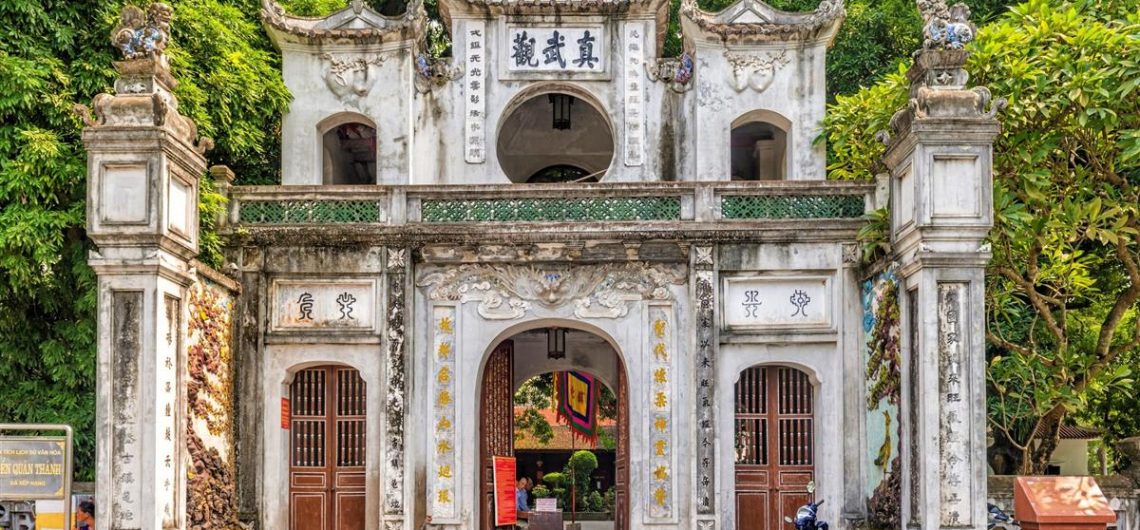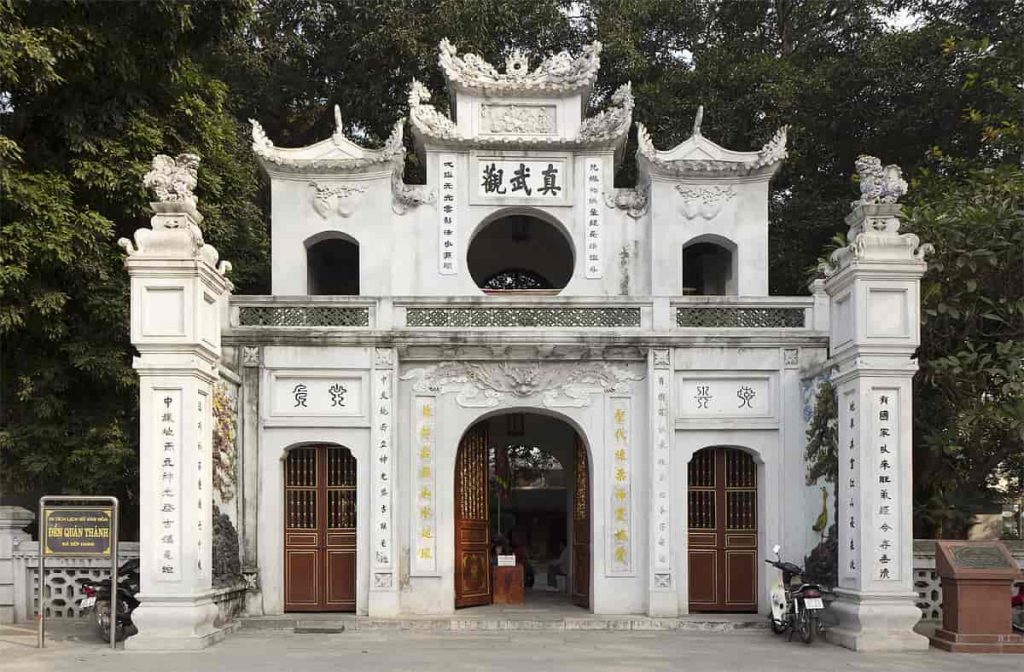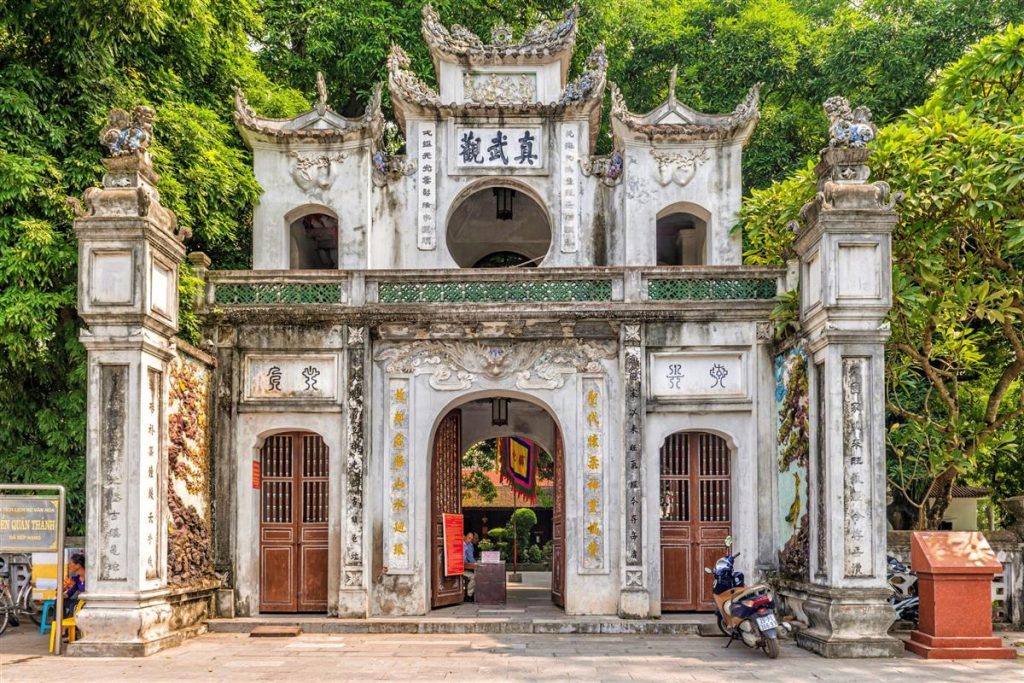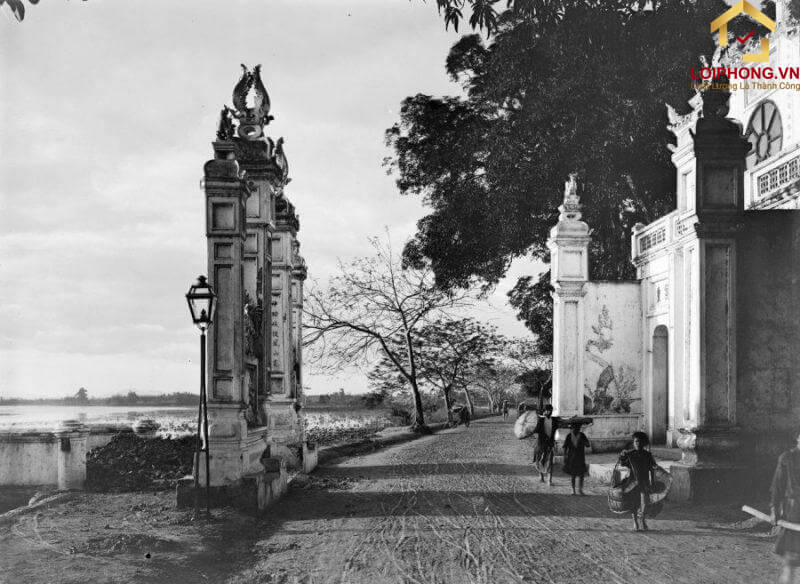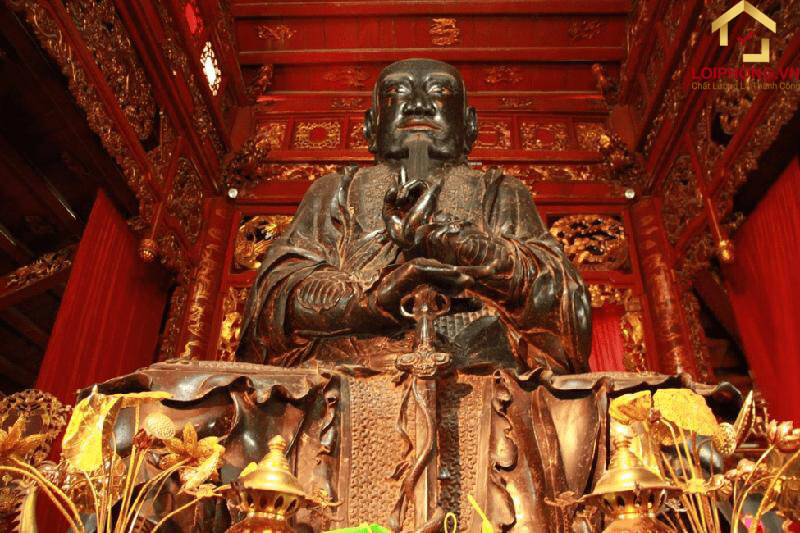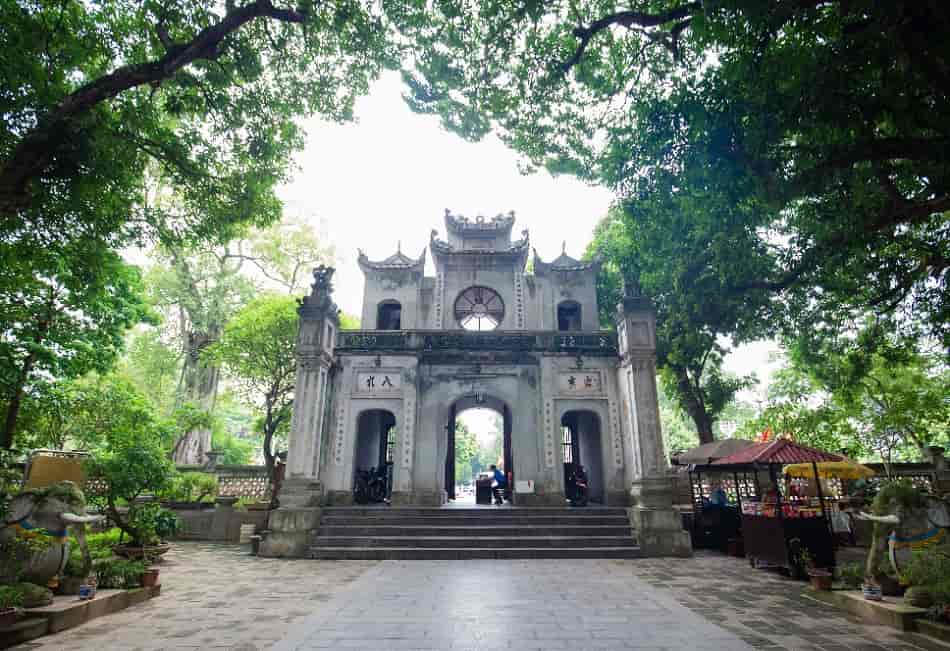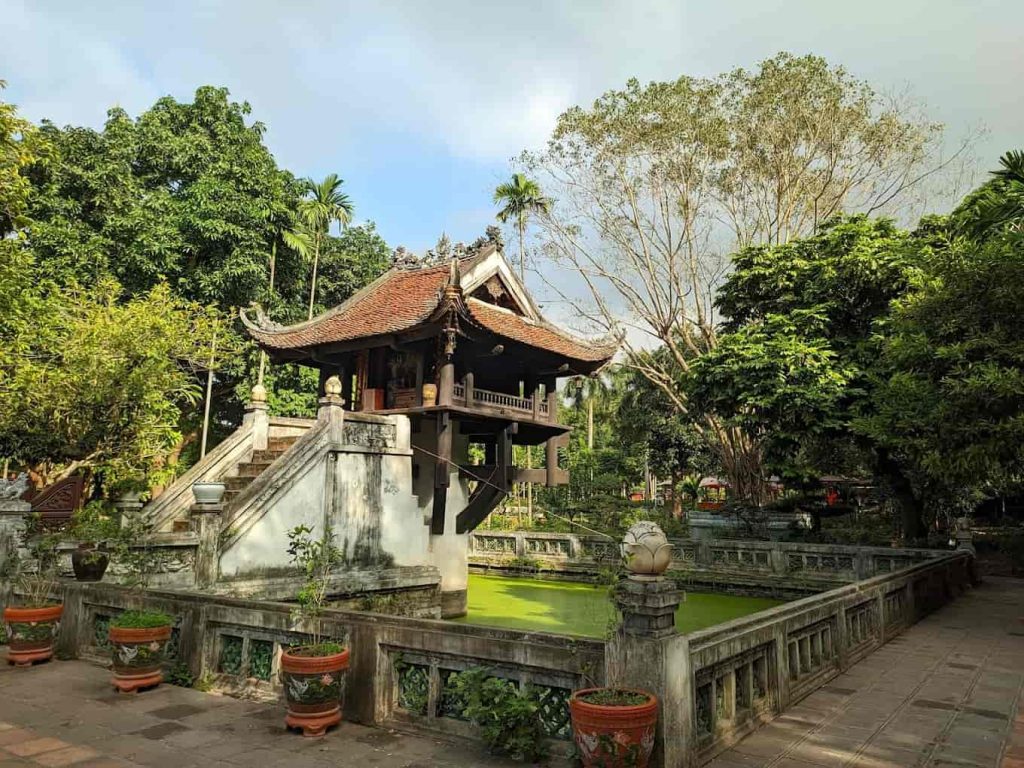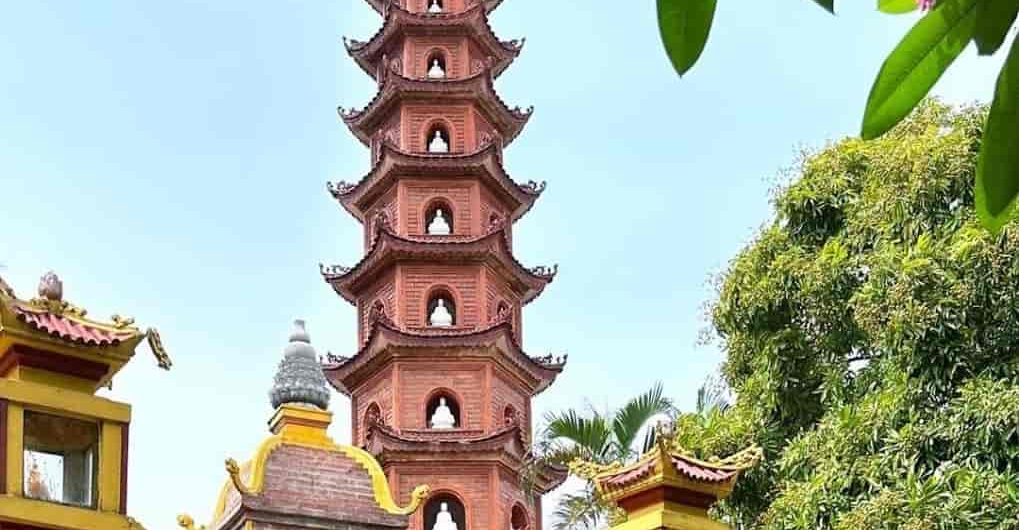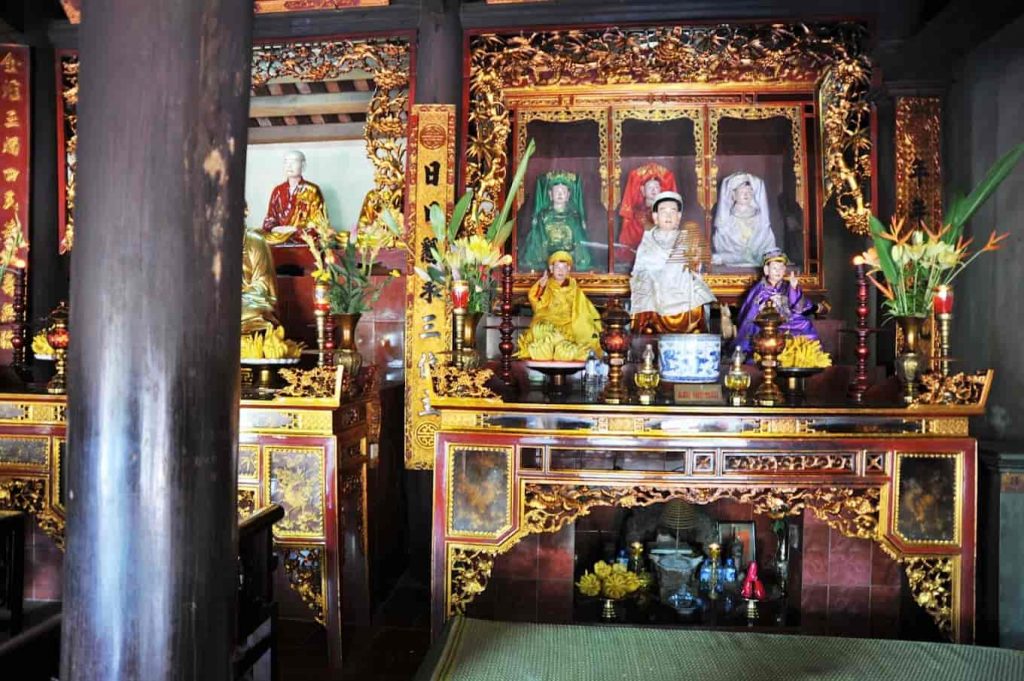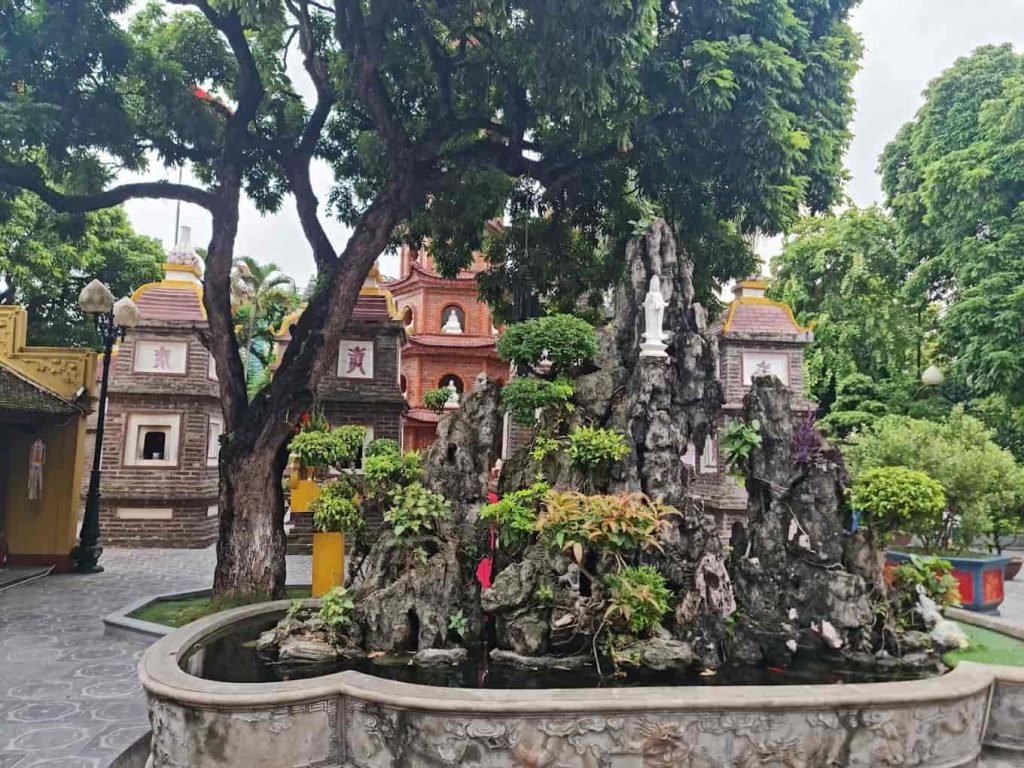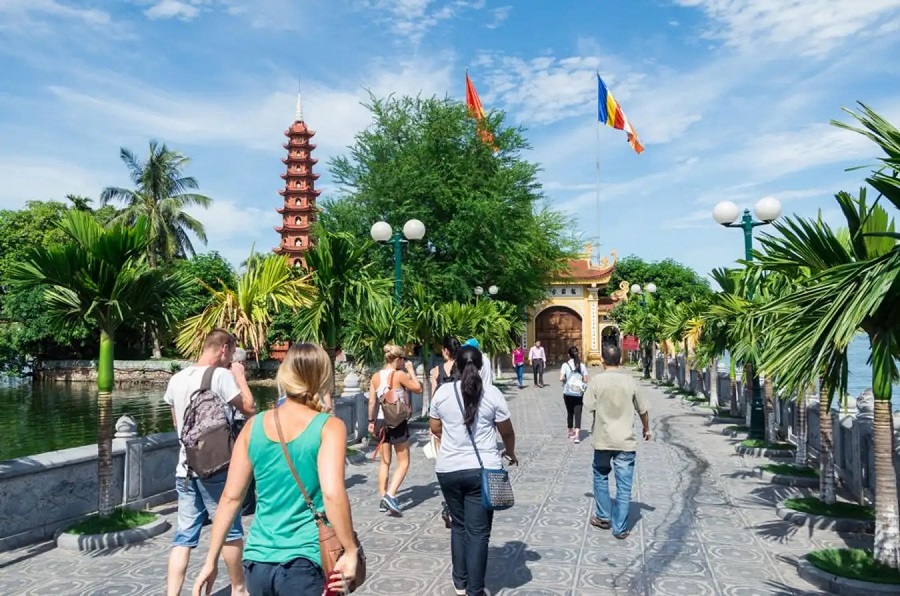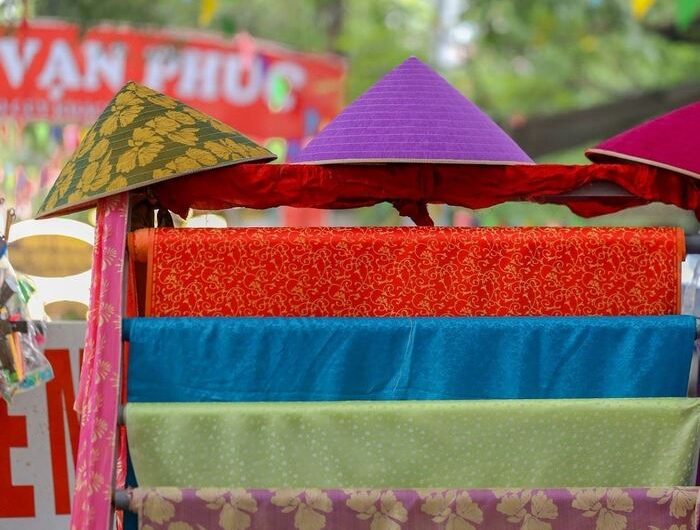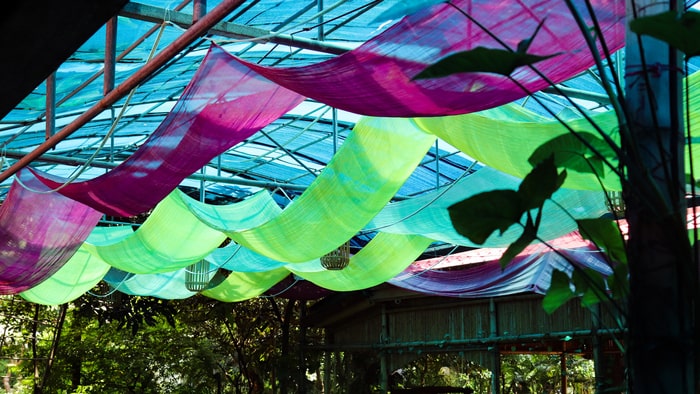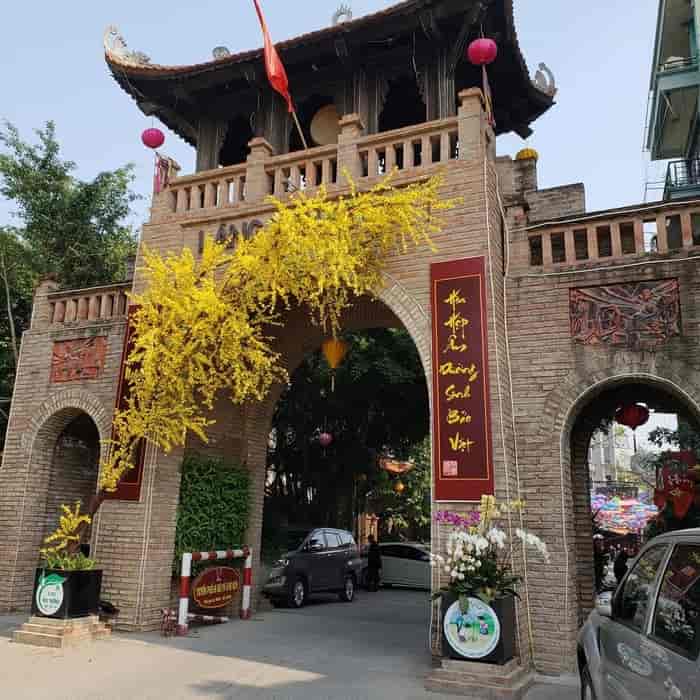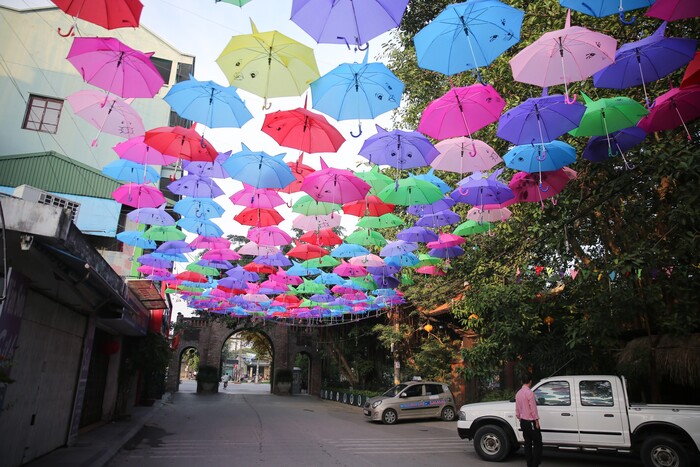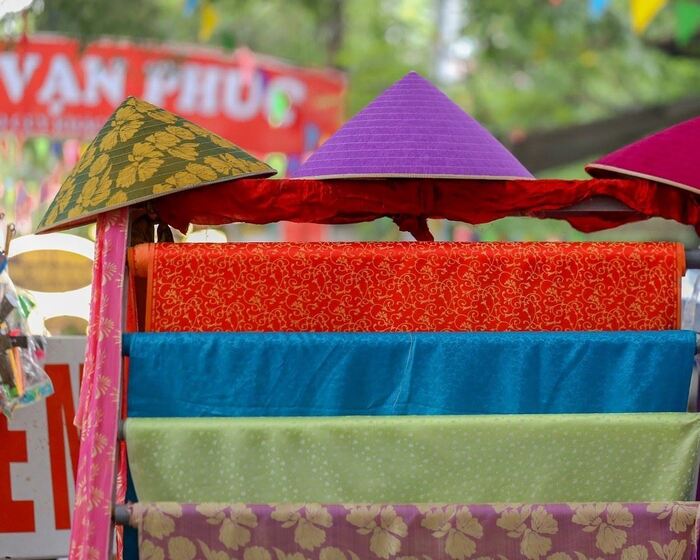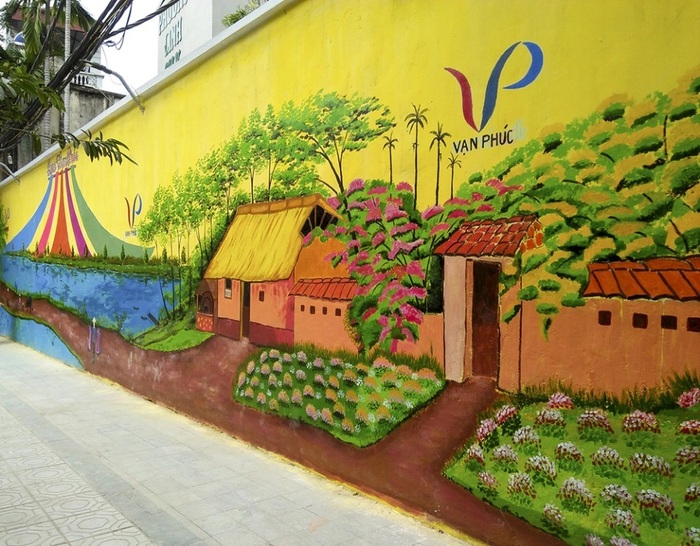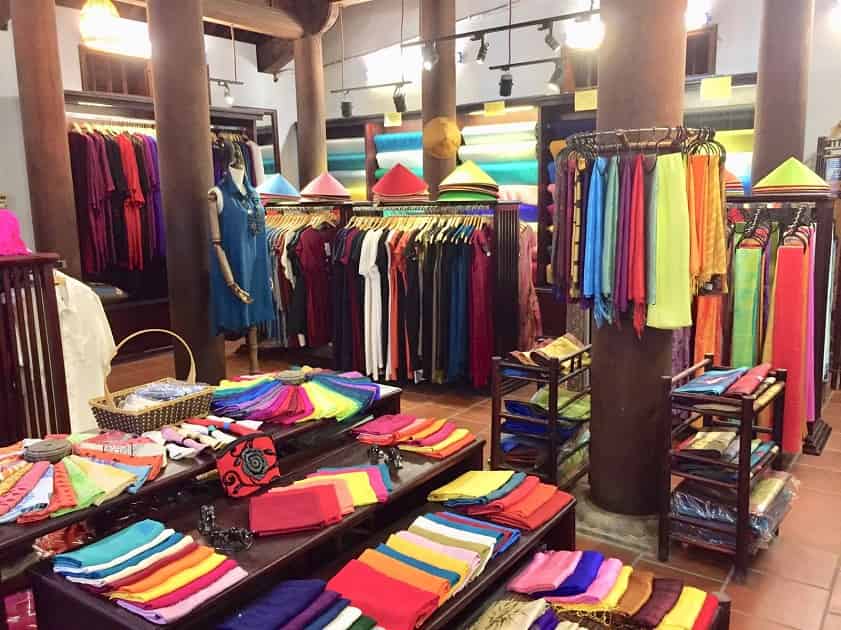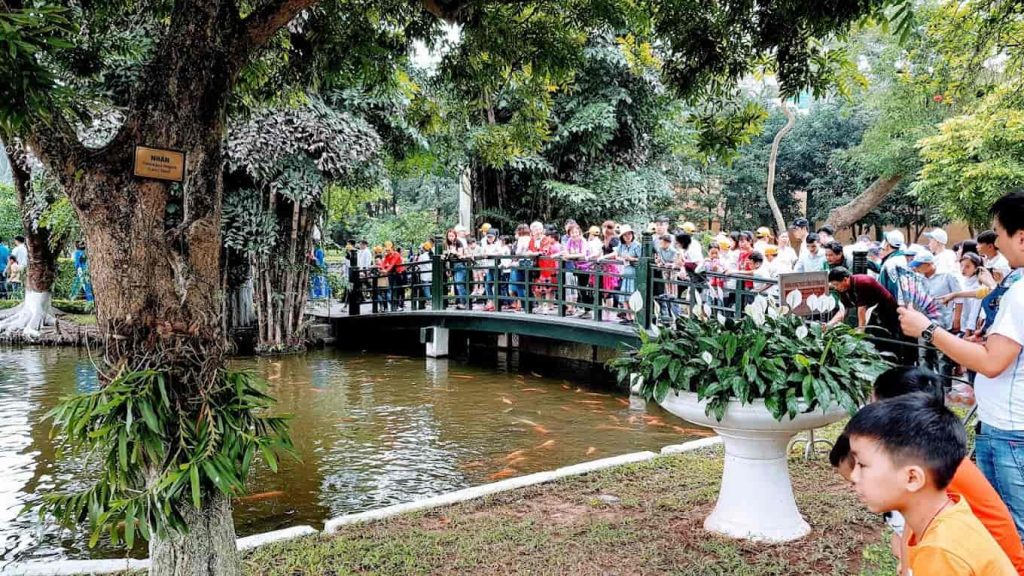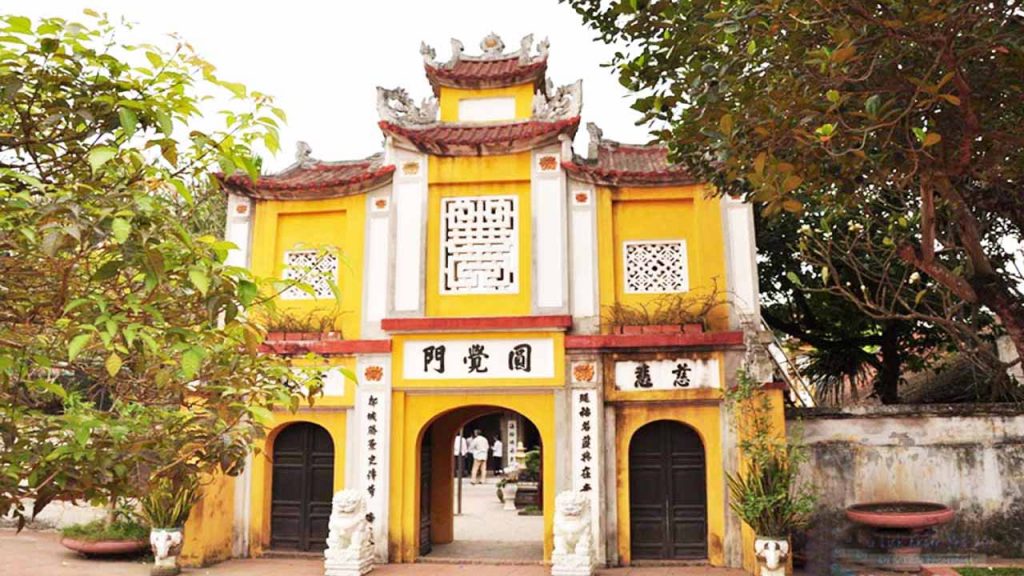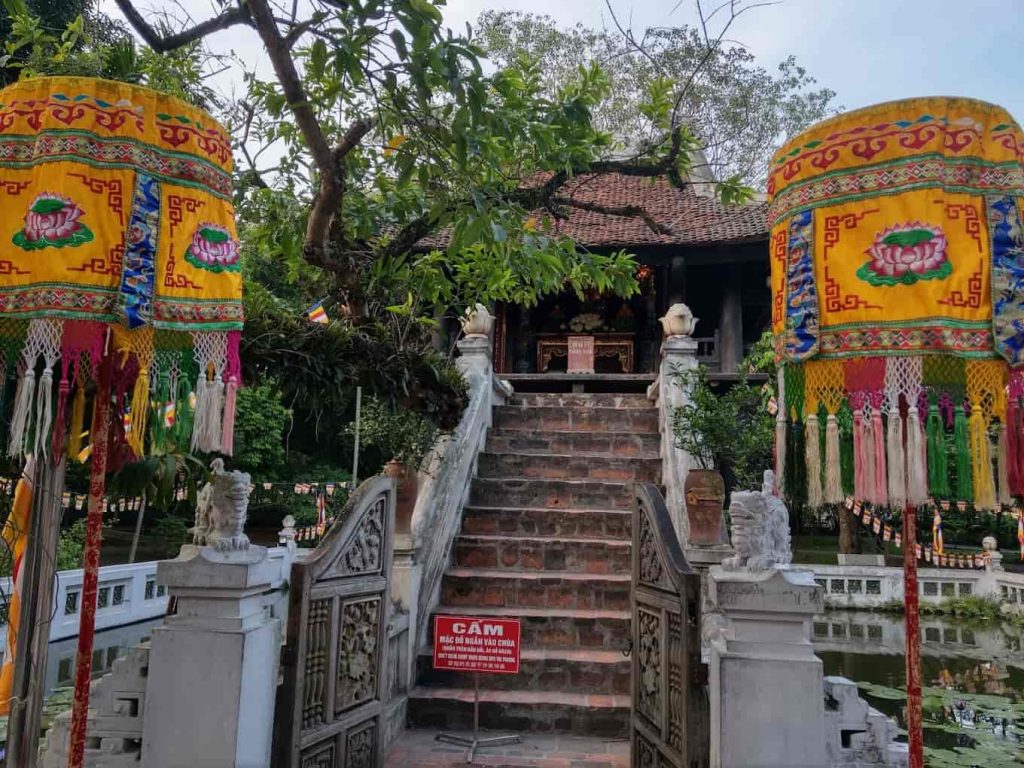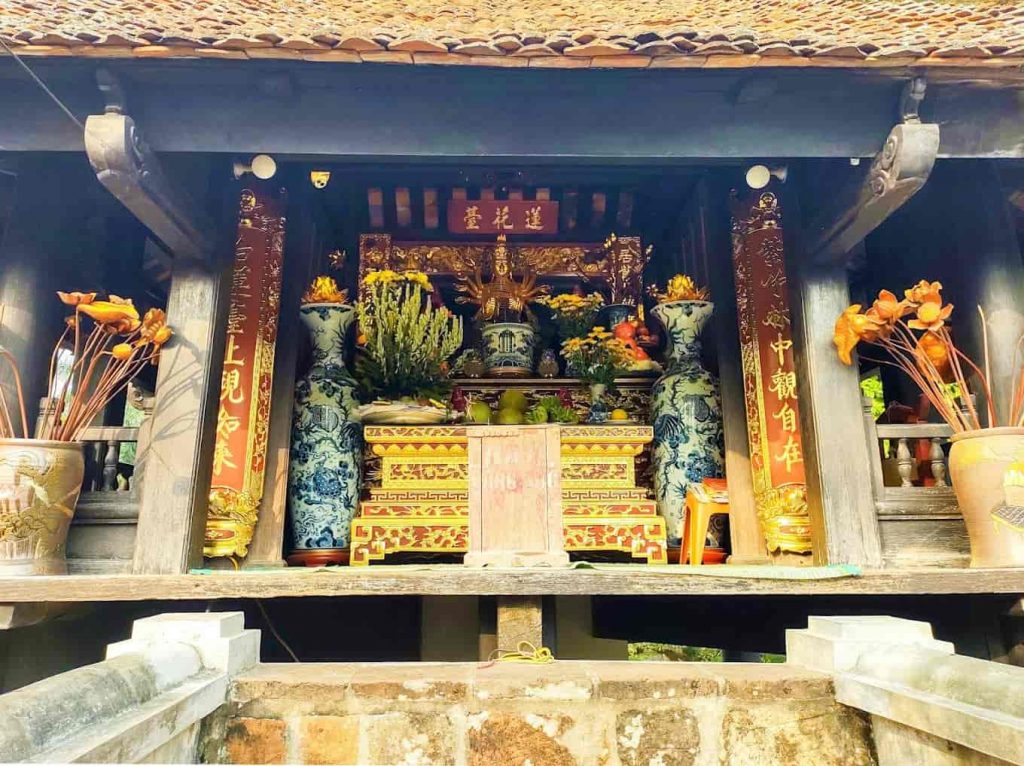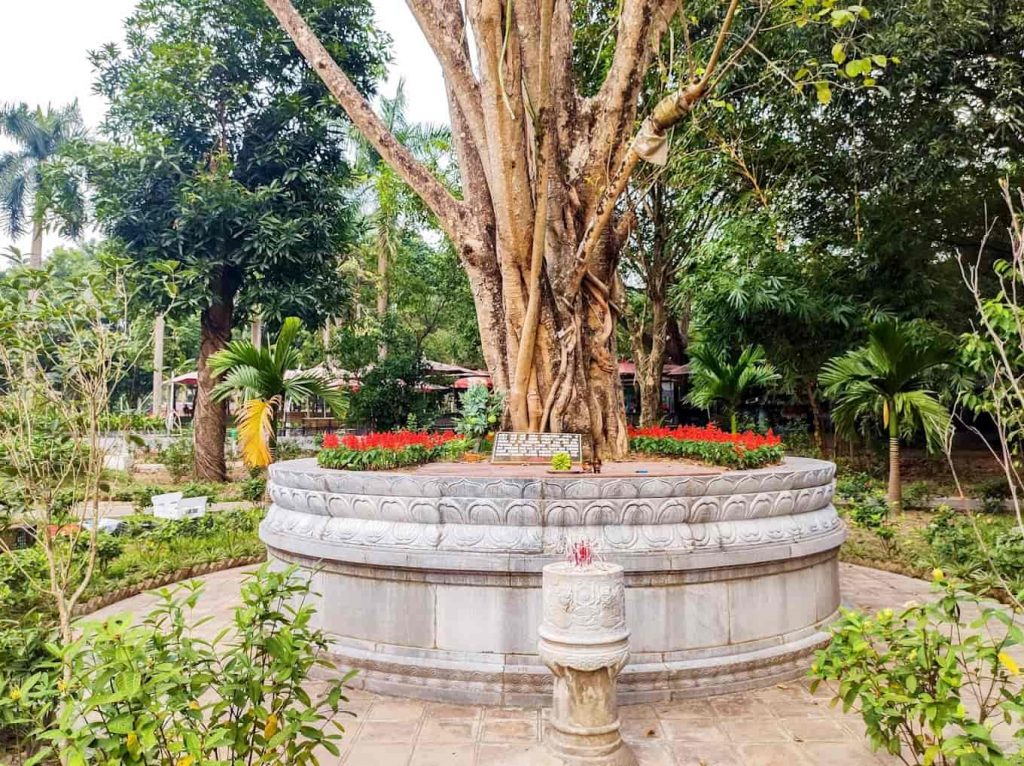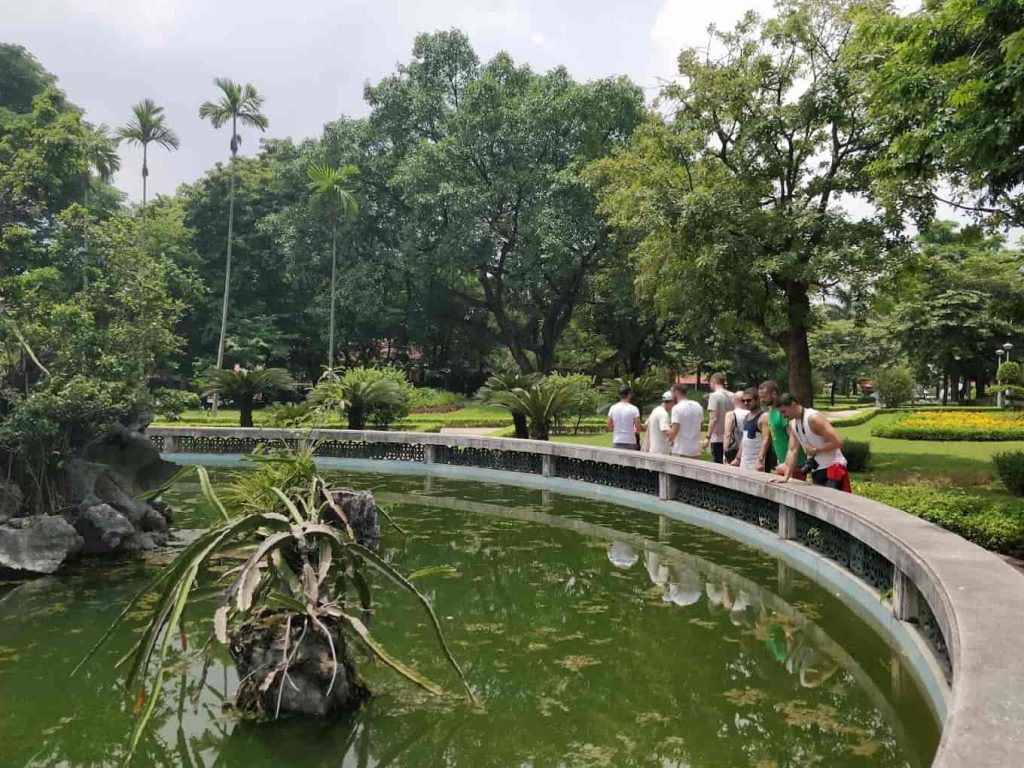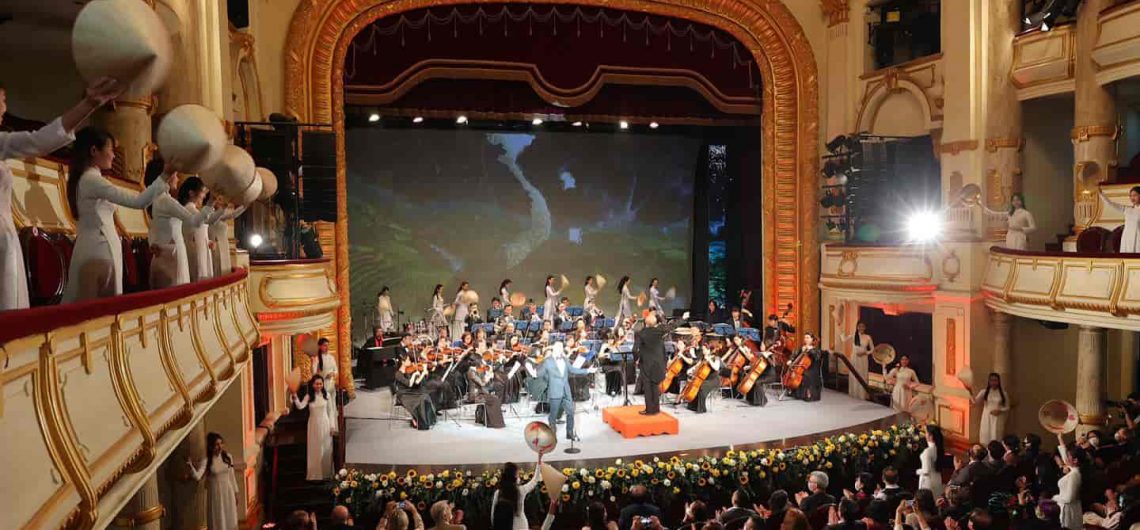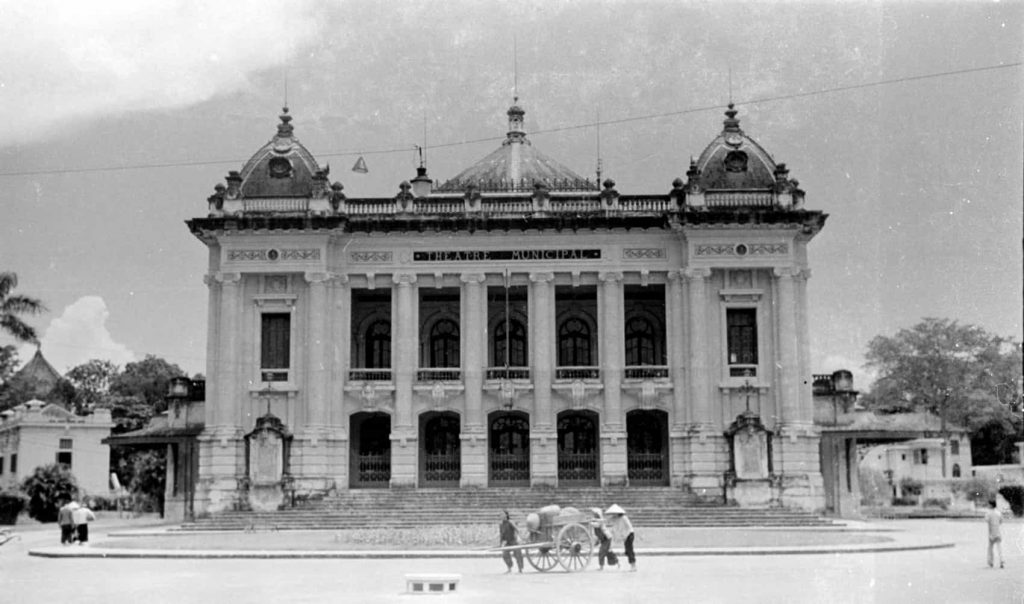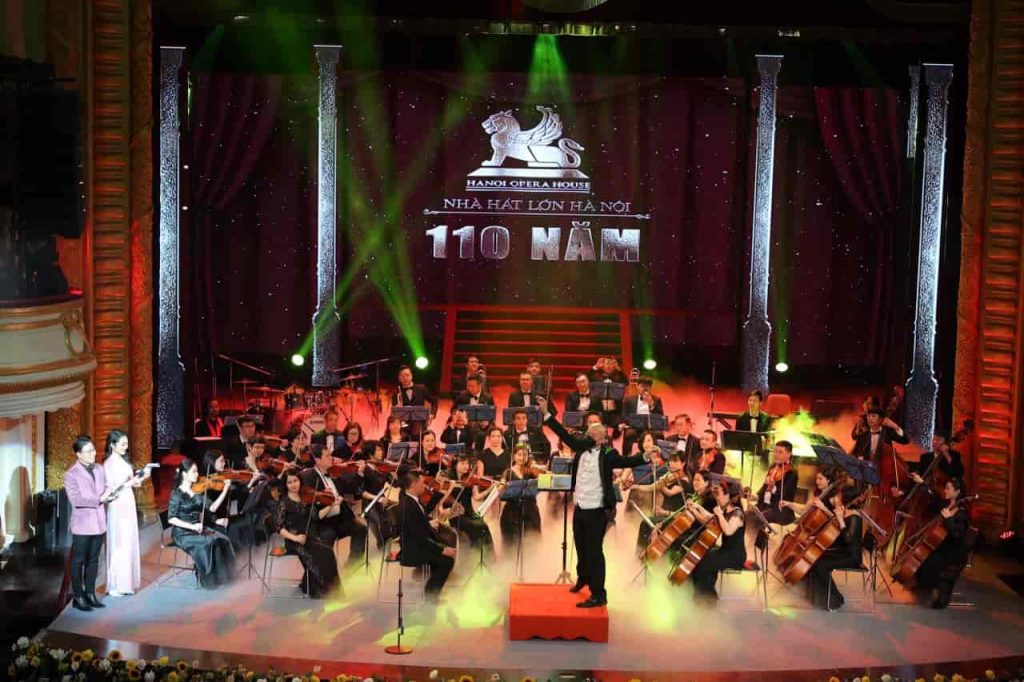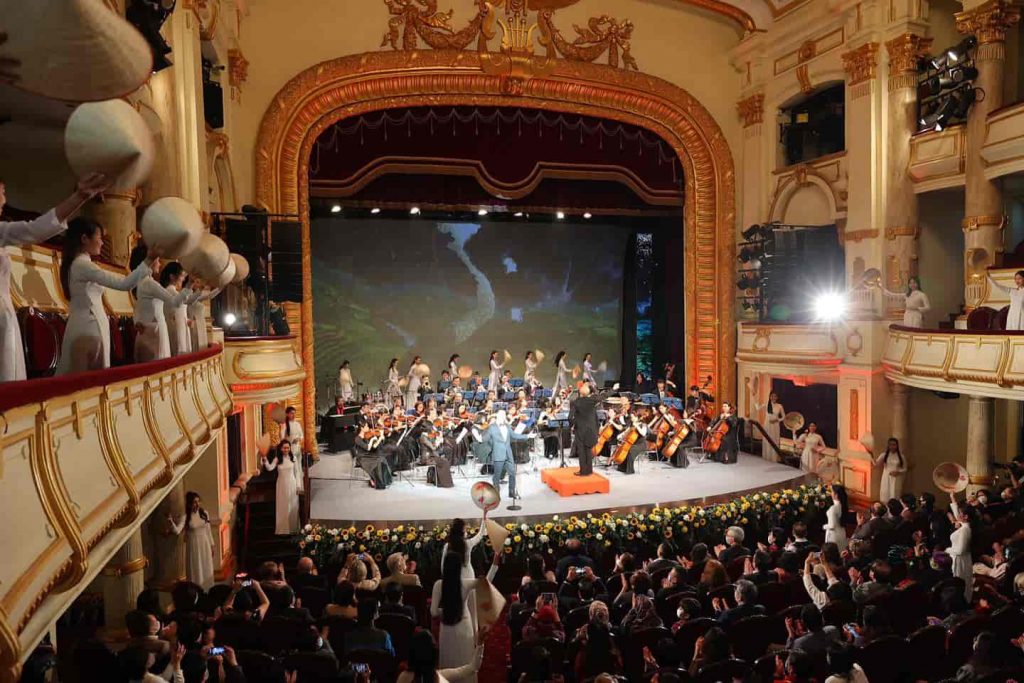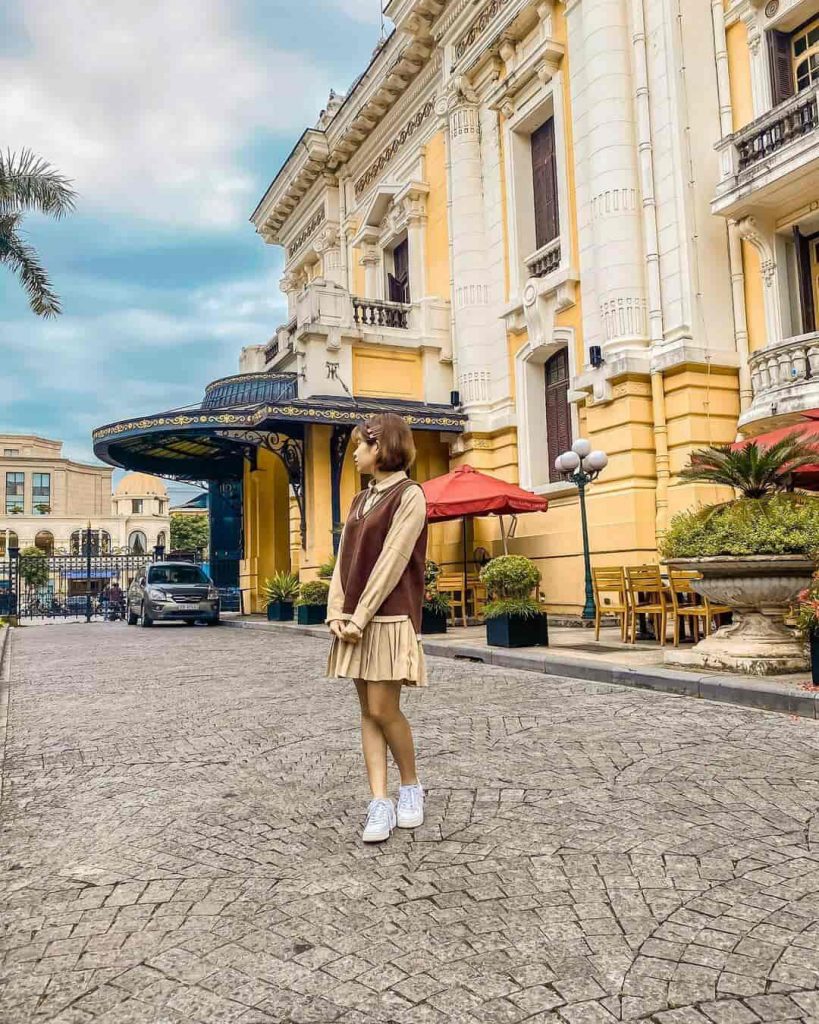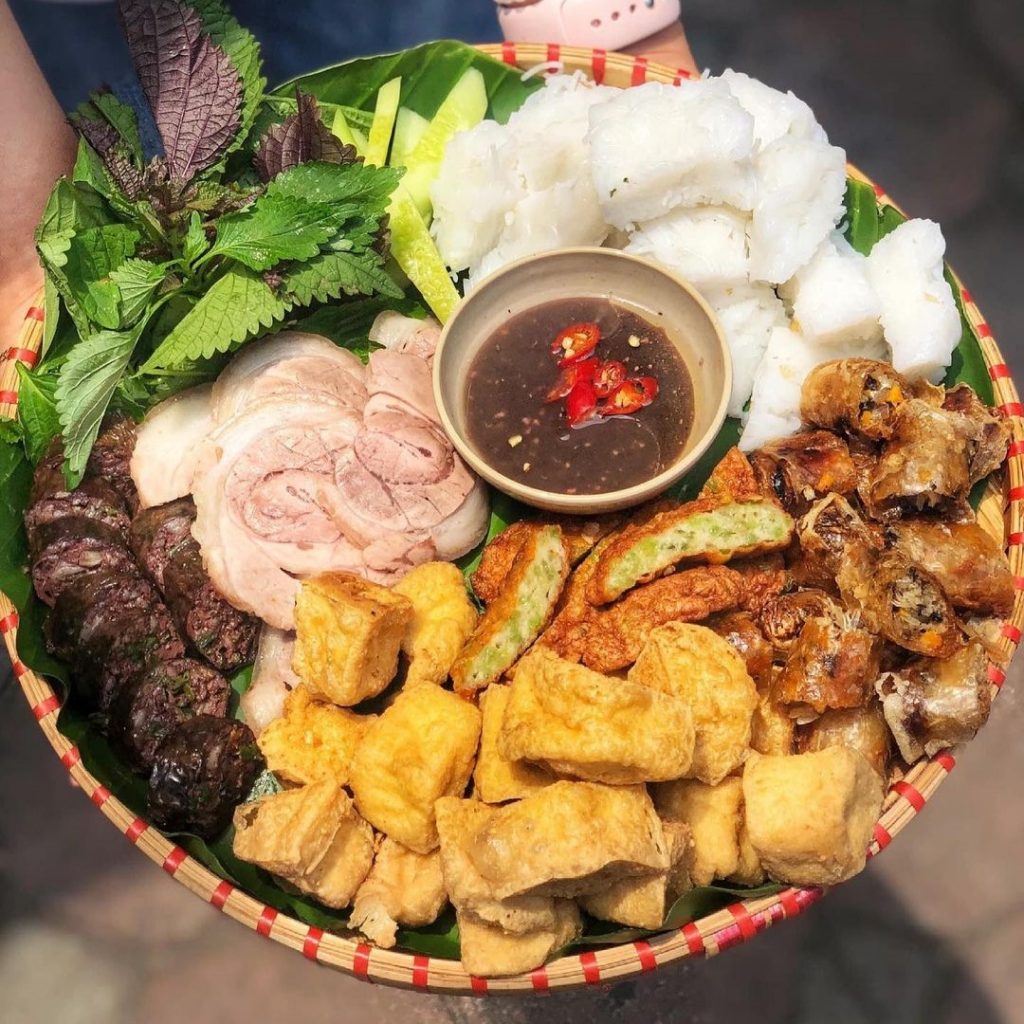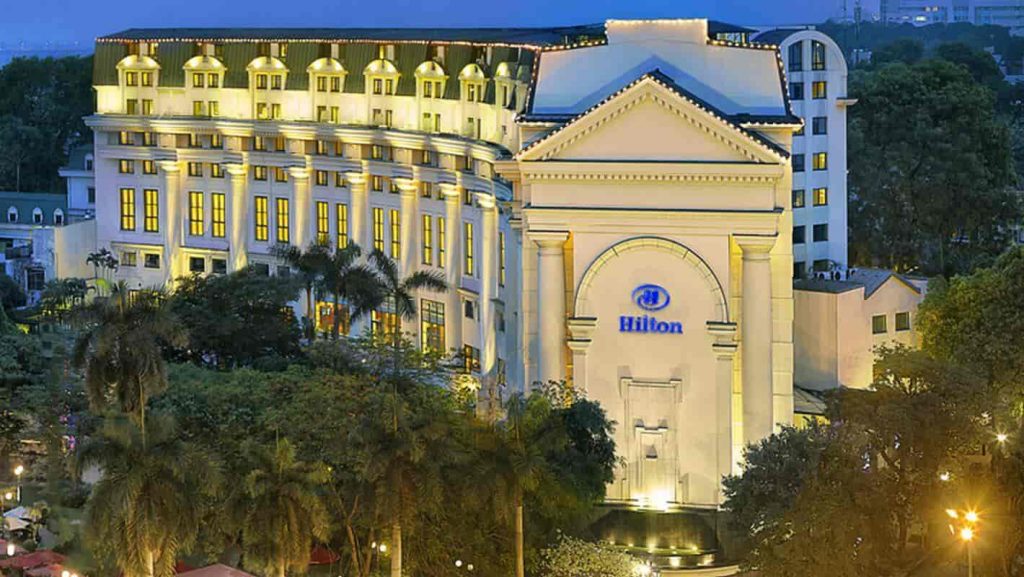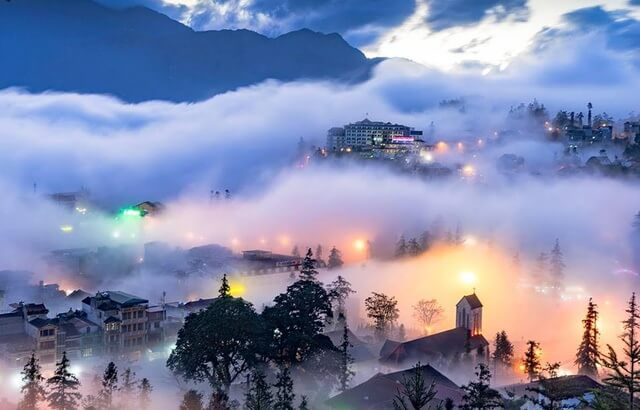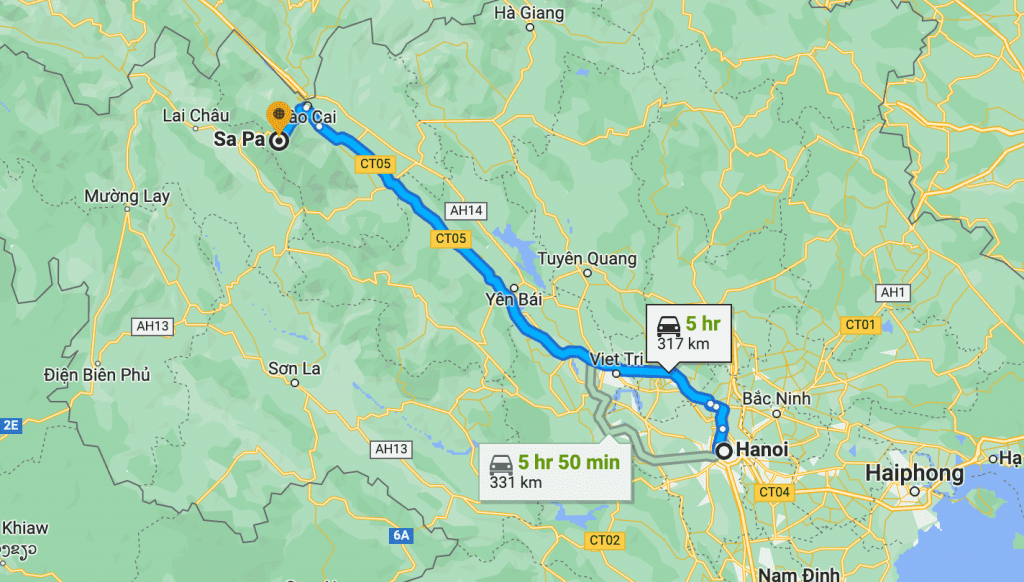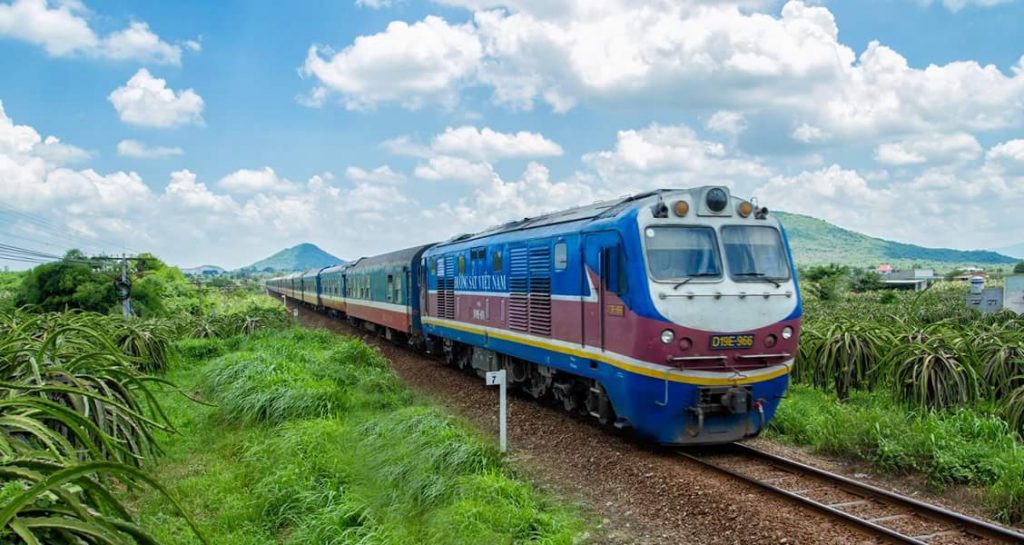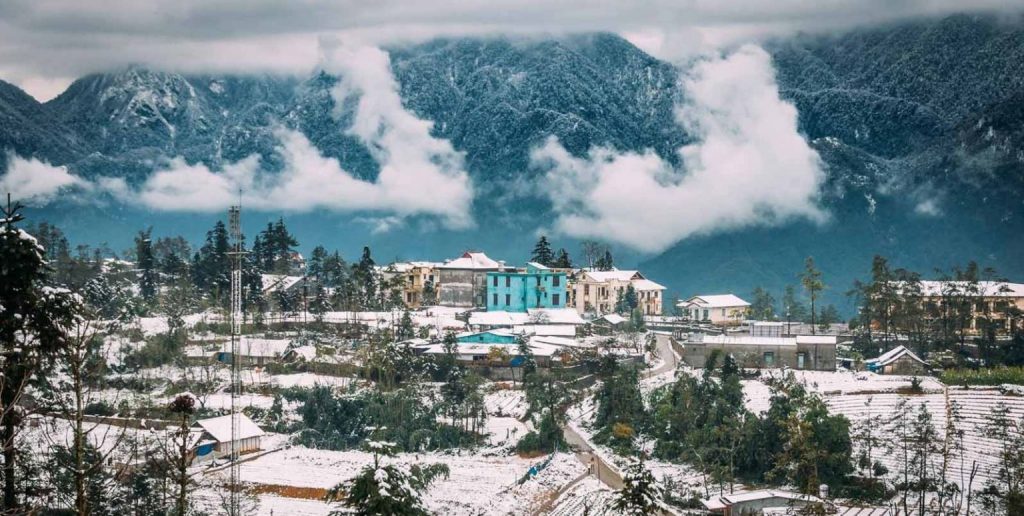Hoan Kiem Lake is often referred to as the “heart” of Hanoi. It is not only a famous tourist attraction for visitors from around the world, but it also holds cultural and historical significance for the country. In this article, DanangPrivateCar.com’s will show you everything you need to know about the places to visit and the must-try dishes when coming to Hoan Kiem Lake.
A Brief Overview of Hoan Kiem Lake
Hoan Kiem Lake, also known as Sword Lake or Ho Guom, is situated in the heart of Hoan Kiem District, Hanoi’s capital city. The lake covers an area of approximately 12 hectares and is surrounded by three streets: Le Thai To, Hang Khay, and Dinh Tien Hoang. From Hoan Kiem Lake, visitors can easily reach Hanoi’s historic streets such as Hang Bai, Hang Ngang, Trang Tien, Trang Thi, and famous landmarks like the Cathedral, the Opera House, and more.

With such a prime location, Hoan Kiem Lake has become a magnet for both domestic and international tourists on their journey to explore the capital city of Hanoi. Its beauty and rich history have inspired countless works of art and poetry.
Regarding the History of the Name Hoan Kiem Lake
The name Hoan Kiem Lake is closely associated with the famous legend of the “returning the sword” or “the magic sword.” In the early 15th century, during the Ming invasion of our country, King Le Thai To, wielding the Heaven’s Will sword, joined forces with the people to defeat the enemy. The Heaven’s Will sword was the same sword that the Dragon King had lent to the king to fight against the invaders.
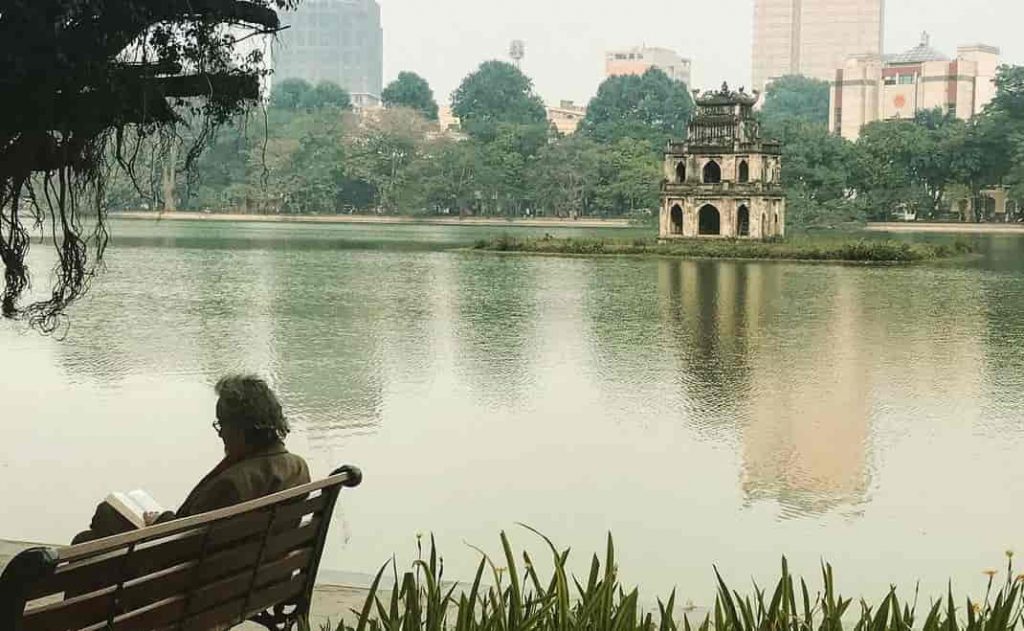
After ascending to the throne in 1428, King Le Thai To was boating on Lake Tả Vọng when a golden turtle suddenly emerged from the water, demanding that the king return the magic sword to the Dragon King. After returning the sword, the Golden Turtle took it in its mouth and disappeared into the depths of the lake. From that moment on, the lake became known as Hoan Kiem Lake, also referred to as Sword Lake.
Which season is the best to visit Hoan Kiem Lake?
The best time to visit Hoan Kiem Lake is usually during the autumn season every year (August, September, October). During this time, the weather is cool, there is no harsh sunlight, and it doesn’t rain much. The temperatures are moderate, making it very convenient for tourists to explore many tourist destinations. Especially, Hanoi’s scenery in the autumn is undeniably beautiful, making it well worth a visit.
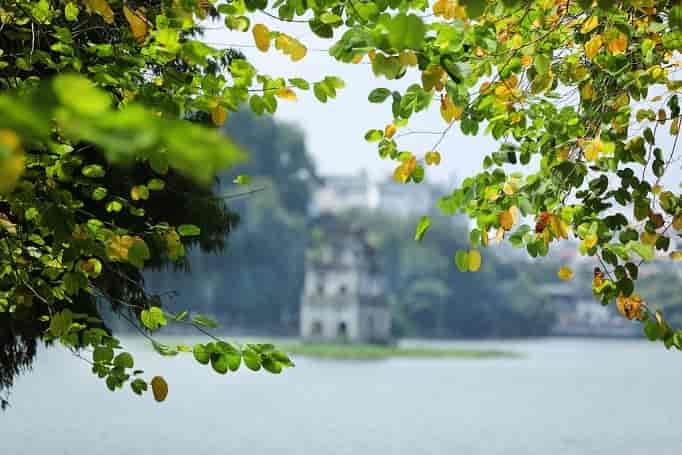
Fastest Ways to Get to Hoan Kiem Lake
Hoan Kiem Lake is located in the heart of Hoan Kiem District, making it easily accessible, and you have various transportation options to choose from:
- Bus: You can take bus routes like 08, 04, 09, 40, 23, 31, 18, 14, 11, 36, and 34 to get to Hoan Kiem Lake. Among them, routes 09 and 14 have bus stops right near Hoan Kiem Lake for added convenience.
- Taxi: For a faster option, you can choose a taxi. Hanoi has several reputable taxi companies like Taxi Group, Mai Linh, Ba Sao, Thanh Cong, and more.
- Motorbike: If you want to experience the streets of Hanoi, a motorbike is the top choice. You can inquire about renting a motorbike at hotels or various rental shops, but make sure to confirm the price beforehand.
- Private Car with Driver: This is a popular mode of transportation for international tourists, offering convenience and competitive prices. Additionally, it’s suitable for exploring multiple destinations. You can rent a private car with a driver in Hanoi through Danang Private Car’s, with a professional and experienced driver team that ensures a safe and comfortable journey.
Visiting Hoan Kiem Lake
Hoan Kiem Lake captures the attention of tourists not only for its gentle, romantic beauty but also for the landmarks that bear the historical imprints of the lake. Let’s explore the must-visit places around Hoan Kiem Lake with DanangPrivateCar.com’s!
Ngoc Son Temple
Ngoc Son Temple is located on Ngoc Island in the middle of the lake and is dedicated to the worship of Van Xuong deity and Saint Tran Hung Dao. The temple exhibits a unique architectural combination of Buddhism, Confucianism, and Taoism, representing the spiritual culture of Hanoi. Connecting Ngoc Son Temple to the lakeside is the bright red wooden The Huc Bridge, which arches gracefully, resembling a shrimp. Standing on the bridge, you can enjoy panoramic views of the lake and capture beautiful photographs.
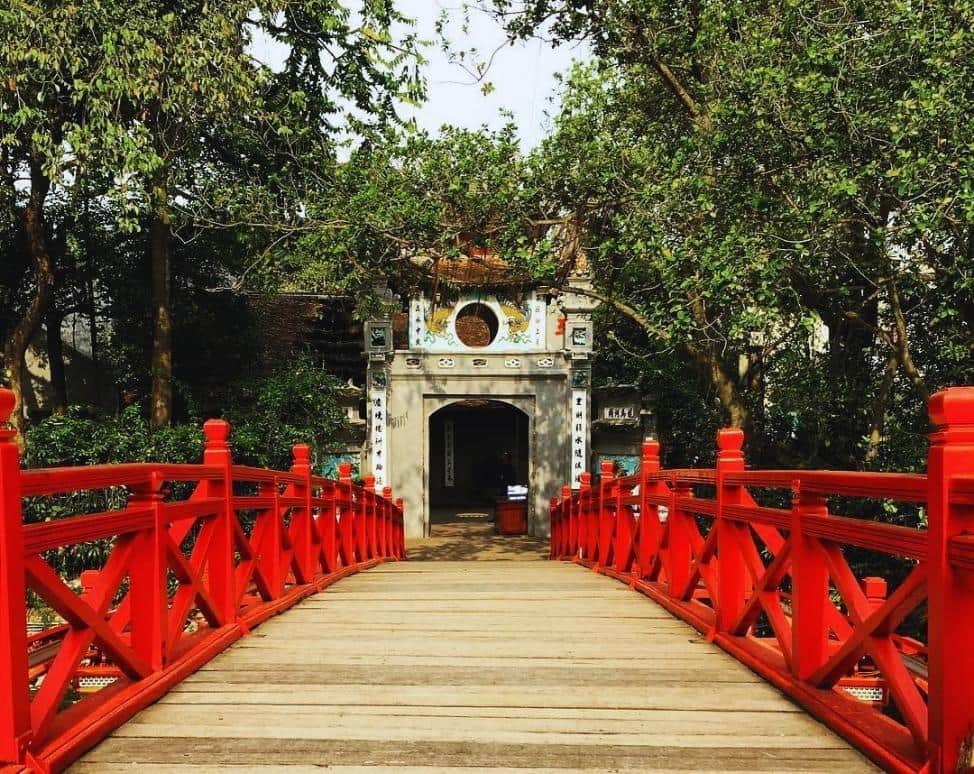
Turtle Tower
Turtle Tower stands on Turtle Island in the lake and was built to commemorate the legend of the Golden Turtle demanding the magic sword. The tower consists of three tiers; the first and second tiers each have five doors, while the third tier has only one east-facing door, with the words “Quy Son Thap” (Turtle Mountain Tower) engraved above the door. This ancient Turtle Tower, a hundred years old, has long been a symbol of Hoan Kiem Lake.
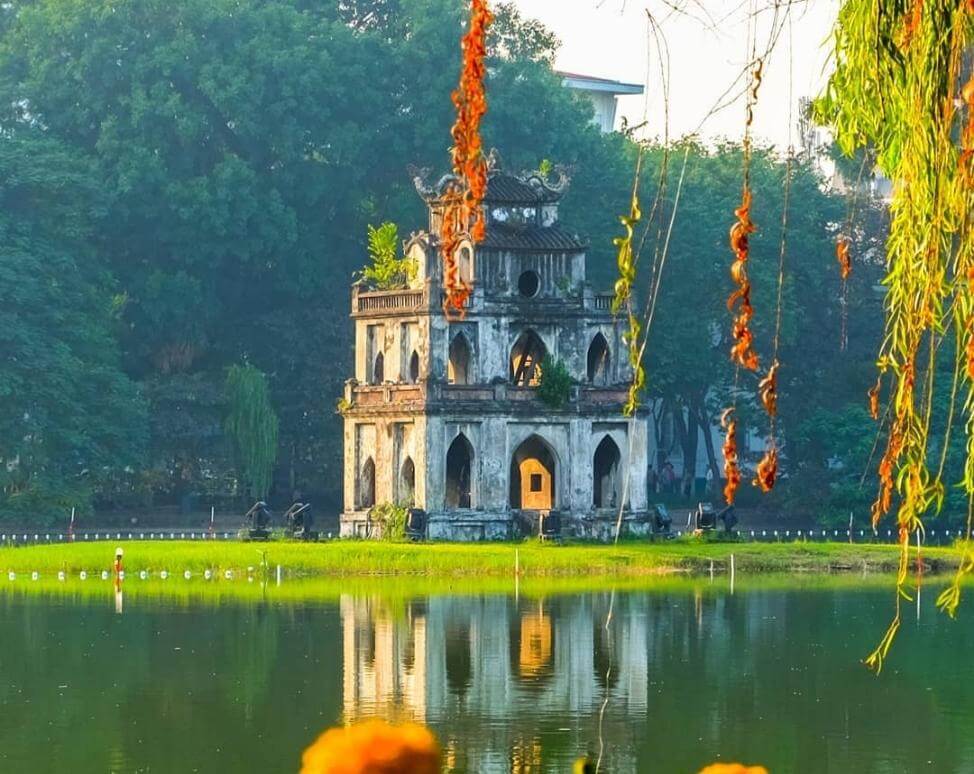
Dai Nghien and But Tower
Dai Nghien and But Tower are two unique architectural structures built at the same time in 1865 at Ngoc Son Temple on Ngoc Island, Hoan Kiem Lake. Dai Nghien consists of three stone legs standing on the backs of three frogs, with a carved classical Chinese poem of 64 characters on its inclined body.
But Tower is designed in the shape of a 9-meter feathered pen, with the nib pointing vertically towards the sky. These two structures symbolize the Vietnamese people’s tradition of scholarship and their pride in intelligence and national culture.
The Huc Bridge
The Huc Bridge is a distinctive highlight amidst the lush scenery of Hoan Kiem Lake. The bridge connects the lakeside to Ngoc Son Temple, featuring a red paint color and a gracefully curving design resembling soft silk. Although it’s a famous photo spot, few know that The Huc Bridge holds a special significance. The bridge is constructed facing the sunrise, signifying the reception of positive energy and the gathering of light. The bridge’s color represents life, joy, and happiness. Additionally, the name “The Huc” can be likened to “The Bridge of the Sun Deity.”

Ba Kieu Temple
- Address: 59 Dinh Tien Hoang, Hang Trong Ward, Hoan Kiem District, Hanoi
Ba Kieu Temple was built during the reign of Le Trung Hung and is currently divided into two parts: Tam Quan and the Worship Hall. This ancestral temple, also known as Thien Tien Dien, is situated in the northeast of Hoan Kiem Lake and is dedicated to Princess Lieu Hanh, Queen Hoa, and Queen Quynh Hoa. With its cultural and spiritual significance, Ba Kieu Temple has become a place of interest for local people and travelers from near and far who come to visit, learn about religious beliefs, and cultural heritage. You can visit the capital during the annual lunar March to participate in the Ba Kieu Temple Festival, an event that honors the Goddess Ba Kieu and seeks good fortune and peace for all.
Thang Long Water Puppet Theatre
This is one of the oldest and still operational water puppet theaters. Visitors can enjoy unique water puppet performances and get a chance to learn about the distinctive traditional culture of the Vietnamese people. The theater is open every day of the week, and ticket prices for the water puppet show range from 60,000 to 100,000 VND.

Ly Thai To Flower Garden
Ly Thai To Flower Garden (also known as Chi Linh Flower Garden) is situated on Dinh Tien Hoang Street, Hoan Kiem District, and is where the statue of King Ly Thai To is placed. The garden space is tranquil and regularly hosts various historical, cultural, and artistic events in the city. It’s a favorite destination for both tourists and locals in the late afternoon.
Hoan Kiem Walking Street
The walking street has become synonymous with Hoan Kiem Lake and attracts a large number of local and international tourists, especially on weekends.

The walking street is open from 6 PM on Friday through Sunday, extending through most of the historic streets around Hoan Kiem Lake. It features a wide range of shopping, entertainment, and artistic activities. If you’re not sure where to go on the weekend, the walking street is a recommendation that won’t disappoint. As you stroll around the lake, you can try joining a group playing shuttlecock, jumping rope, enjoy unique dance or singing performances, visit souvenir stalls, and savor ice cream at Trang Tien Street. All of these enjoyable experiences are sure to make you want to return many more times.
Information about the Hoan Kiem Turtle
Many tourists are curious about the turtles that used to inhabit Hoan Kiem Lake. In fact, the Hoan Kiem Turtle, also known by its scientific name Rafetus Leloii, belongs to the family of Softshell Turtles within the order of Turtles (Testudines) and the class of Sauropsida. According to historical records, there were four different individuals of the Hoan Kiem Turtle. One of them, which has passed away, is preserved at Ngoc Son Temple, another is kept at the Hanoi Museum, and one was killed between 1962 and 1963 when it ventured into Chí Linh Flower Garden. By 2011, there was only one individual of the Hoan Kiem Turtle left. During its time in the lake, the turtle was frequently lifted out for treatment of injuries and was affectionately called “Grandpa Turtle.” Sadly, in 2016, the last remaining individual of the Hoan Kiem Turtle in the lake passed away.
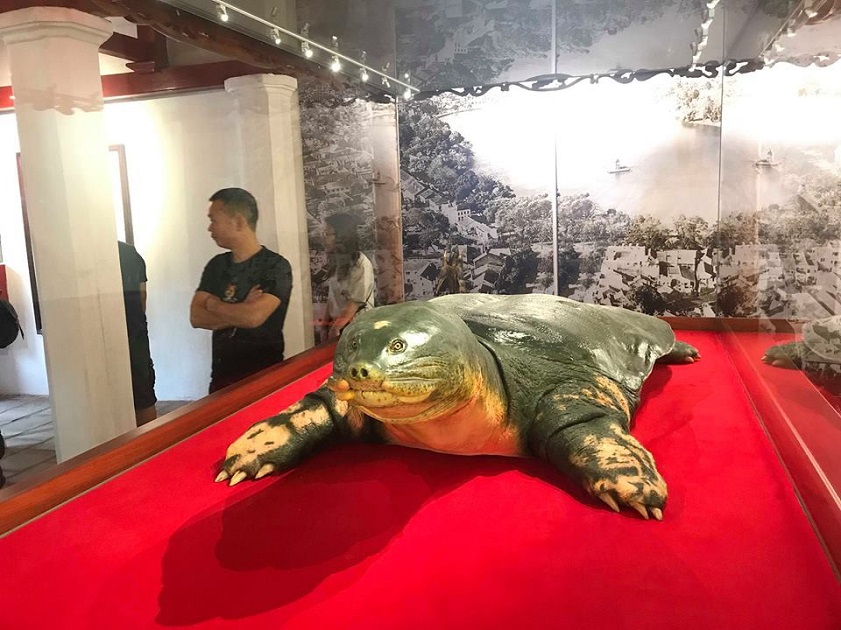
To get a glimpse of the Hoan Kiem Turtle, you can plan a visit to Ngoc Son Temple, the sacred temple in the middle of the lake. Here, a specimen of the turtle is displayed with a coloration similar to its appearance in life, providing a realistic representation of this unique creature.
What to Eat at Hoan Kiem Lake?
- Bun cha: This is definitely a must-try dish when you visit Hanoi! At Hoan Kiem Lake, you can easily find many quality bun cha restaurants. The flavor of Hanoi’s bun cha will surely leave a lasting impression on every traveler.
- Bun dau: The authentic Hanoi-style bun dau with shrimp paste offers a distinctive flavor with various components such as boiled meat, tofu, fried spring rolls, pork intestines, and vermicelli, all served with a variety of fresh herbs.
- Bun thang: Bun thang is a harmonious combination of 12 distinct ingredients, prepared with intricate processes that create a unique and delicious flavor.
- Nom ho: This dish combines shredded papaya with jellyfish, dried beef, peanuts, and more, offering a light and slightly sweet taste that is popular among young people.
- Trang Tien Ice Cream: This ice cream is already famous! Enjoying Trang Tien ice cream on a hot day is a delightful experience in itself.

Here are some excellent dining options in the Hoan Kiem area for your culinary journey:
- Dong Xuan Market – Old Quarter Food Paradise:
- Address: Dong Xuan Ward, Hoan Kiem District
- Price Range: 15,000 – 35,000 VND per dish
- Bun Thang Cau Go:
- Address: 48 Cau Go, Hoan Kiem District, Hanoi
- Price Range: 30,000 – 55,000 VND per serving
- Trang Tien 35 Ice Cream:
- Address: 35 Trang Tien, Hoan Kiem District, Hanoi
- Price Range: 5,000 – 9,000 VND per cone
- Bun Cha Hang Quat:
- Address: Alley 74 Hang Quat, Hoan Kiem District, Hanoi
- Price Range: 40,000 – 90,000 VND per serving
- Dinh Cafe – A Great Egg Coffee Spot Near Hoan Kiem Lake:
- Address: 13 Dinh Tien Hoang, Hoan Kiem District, Hanoi
- Price Range: 15,000 – 30,000 VND per beverage
Tips for a Perfect Visit to Hoan Kiem Lake
- The best way to explore Hoan Kiem Lake is by walking. The attractions around Hoan Kiem Lake are not far from each other, so walking is not only convenient but also good for your health.
- If you want to fully explore the lake and the Old Quarter, as well as enjoy various attractions, plan to dedicate an entire day to your visit.
- Before purchasing anything around the lake, be sure to inquire about the prices beforehand to avoid overpaying.
Hoan Kiem Lake not only evolves with the passage of time but remains a historical landmark deeply ingrained in the hearts of the capital’s residents, as well as the people of Vietnam as a whole. The place Hoan Kiem Lake always provides visitors with fascinating experiences and a curiosity about the mysterious legends of the nation. It also leaves an enduring impression on everyone regarding the rich and enduring cultural heritage.


